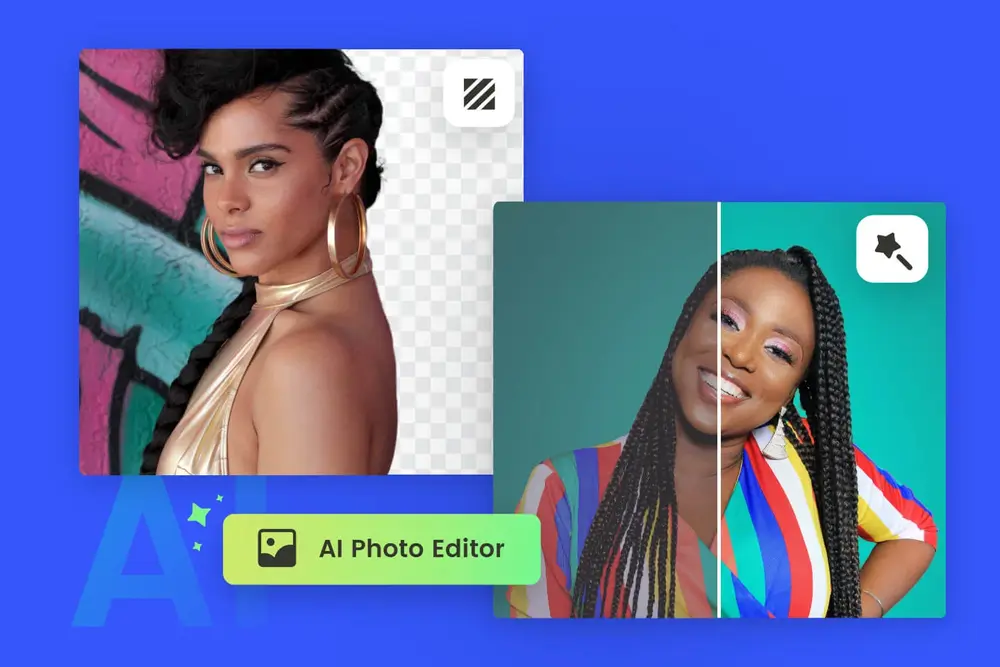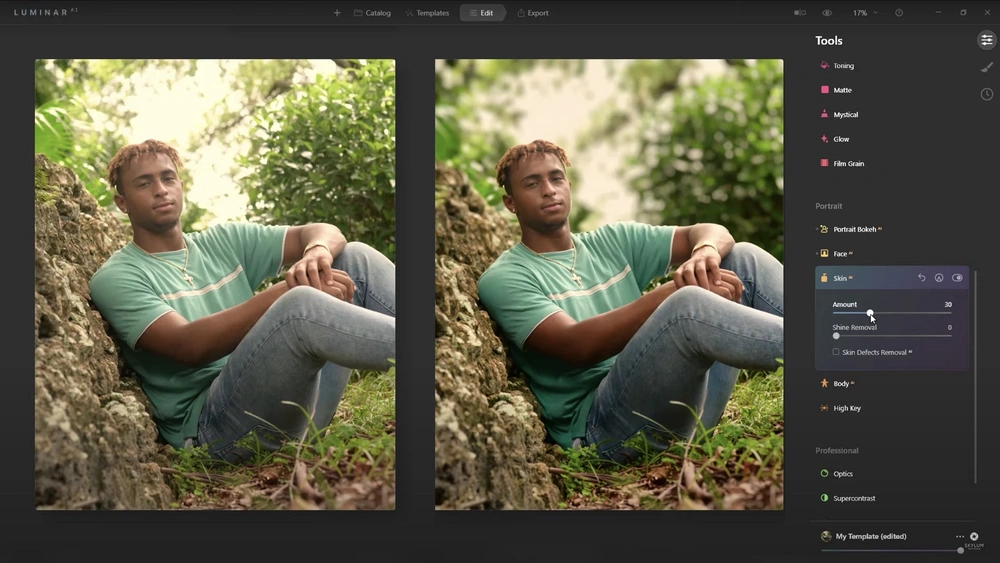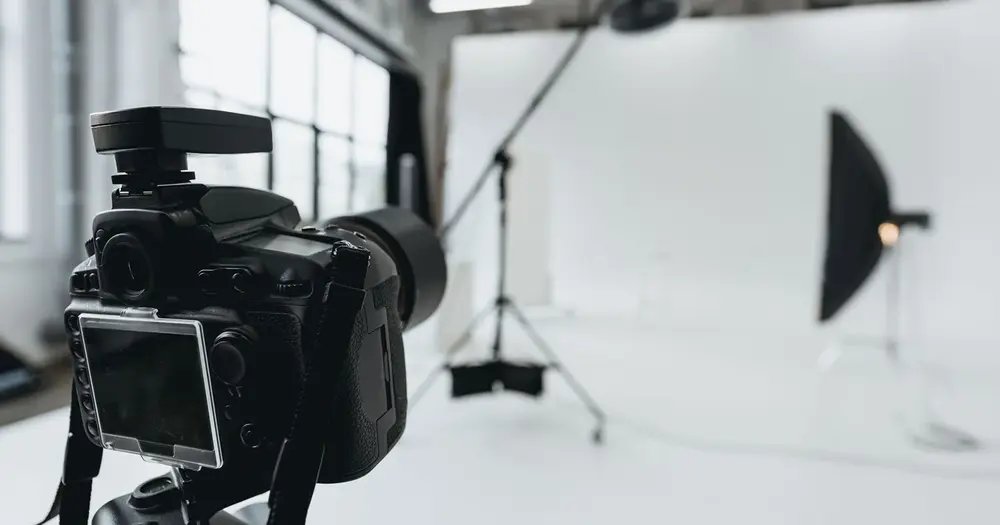The advent of artificial intelligence (AI) has revolutionized various industries, and photography is no exception.
AI photo editors are transforming how we perceive and interact with images, making sophisticated editing techniques accessible to everyone.
This comprehensive guide explores the impact of AI photo editors on the photography industry, their benefits, applications, and future implications.
What Are AI Photo Editors?
An AI photo editor is a software application that utilizes artificial intelligence and machine learning algorithms to automate and enhance photo editing.
These tools can perform various tasks, from basic adjustments like cropping and color correction to complex edits like object removal and style transfer.

How Do They Work?
AI photo editors leverage deep learning models trained on vast datasets of images. These models can recognize patterns, understand context, and apply edits that mimic human editing styles.
By analyzing the content and composition of a photo, AI algorithms can make intelligent adjustments that enhance the overall quality of the image.
Benefits of AI Photo Editors
Accessibility
One of the most notable benefits of AI photo editors is their unparalleled accessibility. These tools democratize advanced photo editing by making sophisticated techniques available to anyone, regardless of their experience or skill level.
In the past, achieving professional-quality results required extensive knowledge of complex photo editing software, a steep learning curve, and a significant time investment. AI photo editors eliminate these barriers by automating intricate processes and providing intuitive, user-friendly interfaces.
With just a few clicks, users can enhance their photos, apply filters, retouch imperfections, or create artistic effects—tasks that once required expert knowledge. This accessibility empowers hobbyists, content creators, and professionals alike to elevate their visual content effortlessly.
Efficiency and Speed
AI photo editors revolutionize the editing process by dramatically reducing the time and effort needed to perfect images. Tasks that once demanded hours of meticulous work can now be completed in mere minutes—or even seconds—thanks to the power of automation and advanced algorithms.
This enhanced efficiency is particularly advantageous for professional photographers managing large batches of images, social media influencers who need quick and consistent edits, and businesses that depend on visually appealing content for marketing and branding.
By streamlining workflows, AI photo editors free up valuable time, allowing users to focus on creativity, strategy, and other priorities.
Consistency
AI photo editors excel at maintaining a consistent editing style across multiple images, a feature that is invaluable for photographers handling large-scale projects.
Whether working on wedding albums, product catalogs, or commercial shoots, ensuring uniformity in color grading, lighting adjustments, and overall aesthetic is critical for achieving a polished and professional look.
Unlike manual editing, where discrepancies can arise due to human error or fatigue, AI-powered tools apply the same set of parameters across all selected images with precision.
This consistency not only saves time but also helps build a recognizable style or brand identity, making the editing process seamless and the final output cohesive.
Creativity and Innovation
AI photo editors open up a world of creative possibilities, providing users with an array of tools and features designed to inspire experimentation and artistic expression.
From applying unique filters and transforming images into digital art to enhancing photos with surreal effects and dynamic adjustments, these editors enable users to explore new styles and techniques effortlessly.
By automating technical aspects, AI tools free users to focus on their creative vision, encouraging innovation and pushing the boundaries of traditional photography.
Whether it’s reimagining a landscape with dramatic lighting, creating whimsical compositions, or achieving cinematic aesthetics, AI photo editors empower both amateurs and professionals to bring their boldest ideas to life.
Applications of AI Photo Editors

Basic Photo Enhancements
AI photo editors excel at performing essential photo enhancements, automatically adjusting key parameters such as brightness, contrast, saturation, sharpness, and color balance to elevate the overall quality of an image. These adjustments help bring out the best in a photo by optimizing its visual appeal and correcting common issues like poor lighting or dull colors.
What makes this feature particularly appealing is its simplicity. With just a single click, users can achieve professional-grade enhancements without needing to manually tweak individual settings.
This ease of use not only saves time but also ensures that anyone, regardless of their editing expertise, can improve their photos effortlessly.
Advanced Editing Techniques
AI photo editors make sophisticated editing techniques accessible to everyone, even those with no prior experience in photo editing. Features like object removal, background replacement, and sky enhancement—once limited to professional tools—are now just a few clicks away.
With object removal, AI algorithms intelligently identify and erase unwanted elements, such as stray objects or blemishes, blending the surrounding area seamlessly for a polished result.
Background replacement enables users to swap out plain or distracting backdrops with stunning, visually appealing alternatives, perfect for transforming the mood or focus of an image. Sky enhancement can replace overcast skies with vibrant sunsets or clear blue skies, dramatically altering the atmosphere of a photo.
These advanced capabilities empower users to achieve creative and professional-looking edits effortlessly, broadening the possibilities for both personal and commercial projects.
Portrait Retouching
AI photo editors excel in portrait retouching, offering tools for skin smoothing, blemish removal, and facial feature enhancement.
These tools can enhance natural beauty while maintaining a realistic look.
Style Transfer and Filters
AI photo editors bring artistry and creativity to the forefront with features like style transfer and advanced filters.
Style transfer leverages AI algorithms to apply the essence of famous paintings or artistic styles to photos, turning ordinary images into works of art reminiscent of Van Gogh’s swirling skies or Monet’s impressionistic brushstrokes. This feature allows users to blend photography with timeless artistic expression, creating unique and visually striking results.
In addition to style transfer, AI-powered filters enable users to transform the mood, tone, and atmosphere of their images effortlessly. From vintage aesthetics and cinematic vibes to vibrant and modern color grading, these filters offer endless creative possibilities.
With just a few adjustments, users can explore different artistic directions and enhance their storytelling through visuals.
Automated Workflow
AI photo editors streamline the editing process for professional photographers by automating time-consuming, repetitive tasks.
Features like batch processing allow users to apply edits, enhancements, or filters to hundreds of images simultaneously, ensuring consistency and saving hours of manual work. This is especially valuable for large projects such as event photography, product catalogs, or editorial shoots.
Additionally, AI tools can automate keyword tagging by analyzing the content of images and generating relevant tags, making it easier to organize and retrieve files in extensive photo libraries.
This automation not only boosts productivity but also frees up photographers to focus on creative aspects of their work, such as exploring new concepts or perfecting their artistic style.
Impact on the Photography Industry

Democratization of Photography
AI photo editors have democratized photography by making high-quality editing accessible to a broader audience.
Hobbyists and amateurs can now produce images that rival those of professionals, leveling the playing field and fostering a more inclusive photography community.
Enhanced Productivity
Professional photographers and businesses benefit from the increased productivity and efficiency offered by AI photo editors.
Faster turnaround times and consistent quality help meet tight deadlines and client expectations.
New Business Opportunities
The rise of AI photo editors has created new business opportunities, such as AI-powered photo editing services and mobile apps.
These services cater to various markets, including social media users, real estate agents, and e-commerce businesses.
Ethical Considerations
The use of AI in photo editing also raises ethical considerations. The ability to manipulate images easily can lead to issues of authenticity and trust.
Photographers and editors must use AI tools responsibly and maintain transparency in their work.
Future Implications
Continued Advancements
AI technology is continuously evolving, and future advancements will further enhance the capabilities of photo editors.
We can expect even more sophisticated features, such as real-time editing and improved understanding of image context.
Integration with Other Technologies
AI photo editors will likely integrate with other emerging technologies, such as augmented reality (AR) and virtual reality (VR).
This integration will open up new possibilities for immersive and interactive visual experiences.
Personalized Editing
Future AI photo editors may offer personalized editing based on individual preferences and styles.
By learning from user interactions and feedback, AI can tailor its suggestions and adjustments to match the unique vision of each photographer.
Ethical Standards and Guidelines
As AI photo editors become more prevalent, the industry may develop ethical standards and guidelines to address issues of authenticity and manipulation.
These standards will help ensure that AI tools are used responsibly and ethically.
Conclusion
AI photo editors are reshaping the photography landscape, making advanced editing techniques more accessible, efficient, and creatively empowering than ever before. These tools simplify complex processes, enabling users of all skill levels to produce professional-quality images with ease.
The benefits of AI in photo editing are extensive. They enhance productivity through automation, ensure consistency across projects, and democratize photography by removing technical barriers. From basic enhancements to advanced features like object removal and style transfer, AI empowers photographers, content creators, and businesses to push creative boundaries while saving valuable time.
As AI technology continues to evolve, we can anticipate the introduction of even more groundbreaking features and applications, transforming how we capture, edit, and share visual content. However, as we embrace these advancements, it is crucial to use AI responsibly and ethically, preserving trust, authenticity, and integrity in the visual narratives we create.
Read More: Instructions for Creating a Portfolio: Individual & Business
Contact US | ThimPress:
Website: https://thimpress.com/
Fanpage: https://www.facebook.com/ThimPress
YouTube: https://www.youtube.com/c/ThimPressDesign
Twitter (X): https://twitter.com/thimpress


